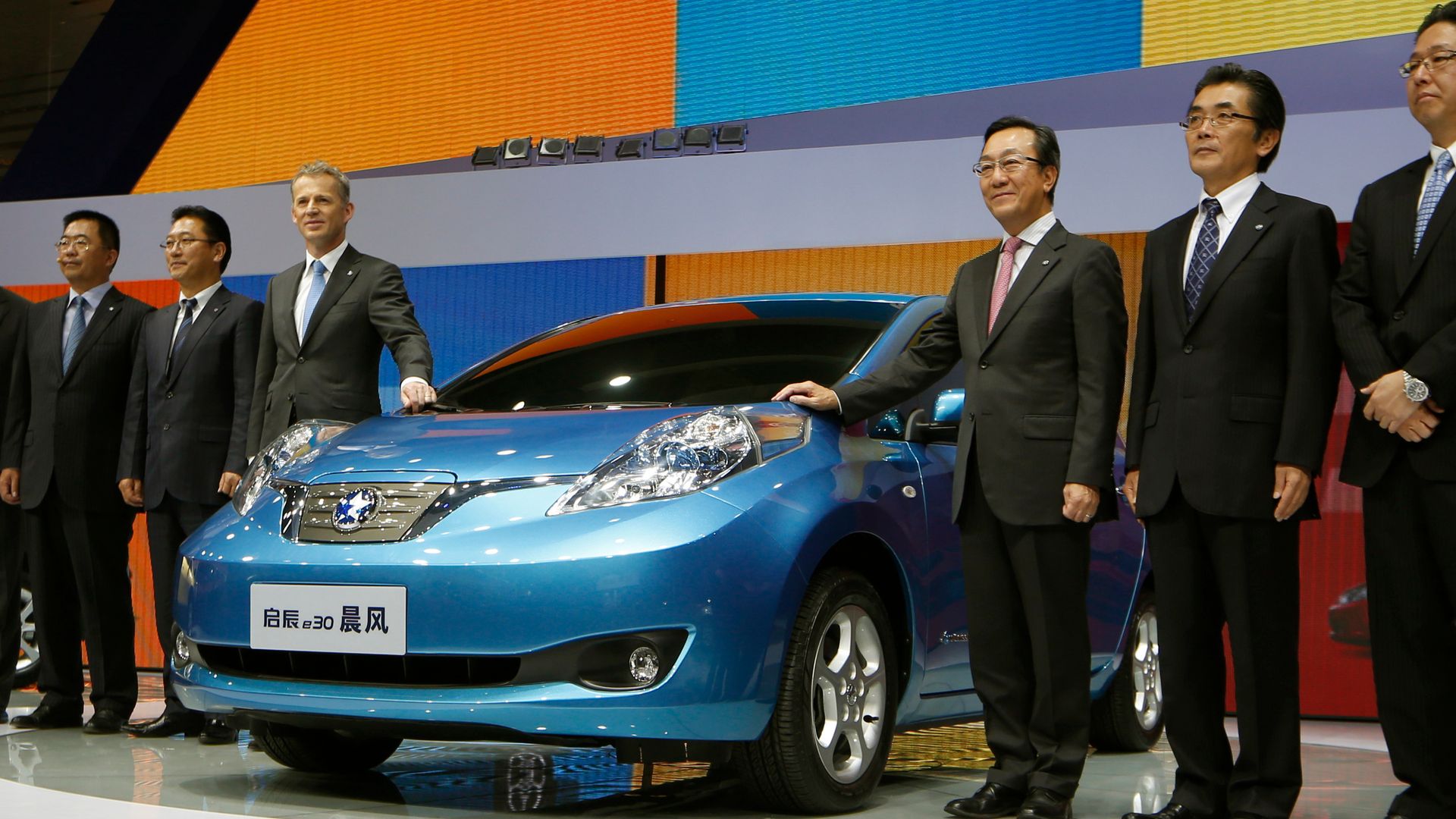
[JACK AYLMER]
IF THE BIDEN ADMINISTRATION WANTS MORE AMERICANS TO DRIVE ELECTRIC VEHICLES, IT. MUST FIRST OVERCOME THE BIGGEST HURDLE TO MASS EV ADOPTION: HIGH PRICES.
IT’S A PROBLEM THAT CHINA HAS ALREADY SOLVED. A POLL CONDUCTED THIS YEAR BY AUTOLIST FOUND THE COST OF PURCHASING AN EV IS THE NUMBER ONE REASON AMERICANS CHOOSE NOT TO BUY THEM.
THE AVERAGE STICKER TAG OF AN EV IN THE U.S. COMES IN AT AROUND $53,000. THAT’S MORE THAN DOUBLE WHERE THE MEDIAN ASKING PRICE STANDS IN CHINA.
PART OF THIS IS DUE TO A CHINESE STRANGLEHOLD ON THE EV SUPPLY CHAIN, 90% OF WHICH RELIES ON THE COUNTRY ACCORDING TO A MORGAN STANLEY REPORT.
THIS HAS TRANSLATED TO CHINA BEING RESPONSIBLE FOR MORE THAN HALF OF GLOBAL EV SALES AND NEARLY TWO THIRDS OF THE WORLD’S EV PRODUCTION IN 2023.
AS A RESULT, CHINESE CONSUMERS HAVE THEIR CHOICE OF 235 EVS, INCLUDING SOME OF WORLD’S CHEAPEST ELECTRIC VEHICLE PRICED AT JUST ABOUT $11,000.
COMPARE THAT TO THE 51 OPTIONS AVAILABLE TO AMERICANS, THE LEAST EXPENSIVE OF WHICH COST MORE THAN TWICE THEIR CHINESE COUNTERPARTS.
ALSO HELPING KEEP PRICES SO LOW IS BEIJING’S POLICY OF INCENTIVES AND SUBSIDIES ON EVS, ENACTING LEGISLATION THAT COMMITS A TOTAL OF ABOUT $130 BILLION DOLLARS TOWARDS THESE EFFORTS SINCE 2016.
NO OTHER NATION IN THE WORLD SPENDS MORE ON PRODUCTS FROM CHINA THAN THE U.S., SO WHAT’S PREVENTING AMERICANS FROM ALSO ACCESSING THEIR CHEAPER ELECTRIC VEHICLES?
WELL FOR STARTERS, U.S. LAWMAKERS HAVE BEEN STAUNCH OPPONENTS OF THIS.
IN 2018, THE TRUMP ADMINISTRATION IMPOSED A MORE THAN 27% TARIFF ON CARS MADE IN CHINA, A POLICY THAT HAS CONTINUED UNDER PRESIDENT BIDEN. AND THIS YEAR, THE WHITE HOUSE INTRODUCED ADDITIONAL RULES TO KEEP CHINA OUT OF THE U.S. EV MARKET.
THEY INCLUDED THE IRA BLOCKING ALL FOREIGN-MADE ELECTRIC VEHICLES FROM RECEIVING TAX BREAKS, AS WELL AS PREVENTING AMERICAN CAR COMPANIES FROM ACCESSING THESE INCENTIVES IF THEY USE MATERIALS OR PARTS FROM CHINA.
MOST CHINESE CARS ALSO HAVEN’T BEEN ENGINEERED TO COMPLY WITH AMERICAN SAFETY STANDARDS, ADAPTING TO WHICH CAN BE AN EXPENSIVE PROCESS.
AN INDUSTRY STUDY FOUND THAT DIFFERING AUTO SAFETY REGULATIONS IN THE U.S. AND EUROPEAN UNION FORCES AUTOMAKERS TO SPEND OVER $2 BILLION ANNUALLY.
AND EVEN IF CHINESE CAR MANUFACTURERS COULD OVERCOME THESE COSTS, THERE’S STILL NUMEROUS EXPENSES ASSOCIATED WITH BUILDING A RETAIL NETWORK ACCESSIBLE TO AMERICANS.
ALTHOUGH, THIS COULD BE THE FIRST DOMINO TO FALL.
ACCORDING TO THE FINANCIAL TIMES, THREE MAJOR CHINESE EV COMPANIES ARE PLANNING TO SPEND BILLIONS ON NEW FACTORIES IN MEXICO.
THE NEWS HAS REPORTEDLY WORRIED U.S. OFFICIALS THAT THIS COULD OPEN A BACKDOOR FOR CHINESE EVS INTO THE AMERICAN AUTO MARKET.
EXECUTIVES WITH FORD MOTOR GROUP HAVE EXPRESSED SIMILAR CONCERNS REGARDING CHINA, SAYING THE U.S. IS STILL NOT READY TO COMPETE WITH BEIJING WHEN IT COMES TO ELECTRIC VEHICLES.
AND THESE FEARS MAY NOT BE UNFOUNDED.
IN EUROPE, WHERE TARIFFS ON CHINESE MADE EVS ARE MUCH LOWER, CARMARKERS THERE ARE EXPECTED COLLECTIVELY LOSE SEVEN BILLION DOLLARS IN PROFIT BY 2030 DUE TO CHINA’S GROWTH IN THE MARKET.
IF GETTING MORE ELECTRIC VEHICLES ON AMERICAN ROADWAYS WAS THE ONLY GOAL, TAPPING INTO CHINA’S ROBUST AND AFFORDABLE SUPPLY WOULD BE AN EASY SOLUTION.
HOWEVER, DOING SO WOULD LIKELY COME AS A MAJOR BLOW TO U.S. AUTOMAKERS, WHILE SIMULTANEOUSLY HELPING PROP UP BEIJING’S ECONOMY.







